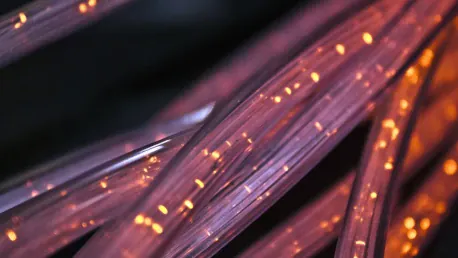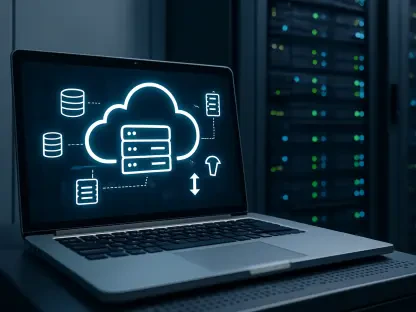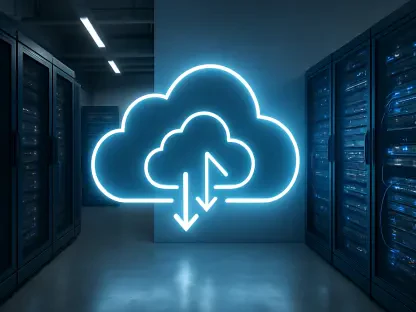When the data center industry talks about the pressures that it has come under in recent years, through the advent of mainstream artificial intelligence (AI), along with the increasing pressure on power networks to meet the demands of ever-higher power servers, we usually look to expand, retrofit, and densify. We look to liquid cooling and alternative energy sources. However, one vital aspect of the data center environment that is often overlooked is the all-important optical fiber cabling that crisscrosses data halls and provides the capacity to allow the traffic to travel both internally and out into the great wide open beyond.
AFL, a leader in optical fiber connectivity, has made significant strides in this field, especially as it celebrates its 40th anniversary in 2024. Understanding the role of interconnects and making informed decisions regarding cabling is essential for maximizing data center capacity. DCD recently spoke to Manja Thessin, market manager for market, strategy, and innovation at AFL, to discuss the latest innovations in fiber and why it’s more important than ever to ensure that data centers are maximizing the capacity of their cabling.
1. Label the Cable
One of the simplest yet most effective ways to manage your data center network is through proper labeling of your cables. Labeling can dramatically reduce troubleshooting time and prevent errors during changes or upgrades. By using consistent labeling schemes, everyone involved in the management and operation of the data center can quickly and easily follow the system, ensuring that tasks are completed correctly and efficiently.
Labeling not only helps with day-to-day management but also plays a crucial role in long-term maintenance and future upgrades. When new staff members join the team or when external contractors are brought in for specific projects, a well-labeled cabling system makes it easier for them to understand the existing setup. This reduces the learning curve, minimizes the risk of mistakes, and ensures that operations run smoothly. Additionally, a labeled system can help identify and address issues promptly, boosting overall productivity and reducing downtime.
2. Organize
Proper organization of cabling is another key factor in maintaining an efficient data center. Over time, unused or dead cables can accumulate, impeding airflow and leading to overheating issues. By taking the time to clean up existing cabling and removing anything superfluous, you can significantly improve the performance and longevity of your equipment. Organizing your cables with Velcro straps and bundling them neatly can help maintain good airflow and cooling efficiency.
A well-organized cabling system also simplifies management and troubleshooting. It becomes easier to identify specific cables, trace them from end to end, and make necessary adjustments without disturbing other connections. Additionally, an organized cabling system reduces the risk of accidental disconnections or damage during routine maintenance or upgrades. Ultimately, a tidy setup can lead to reduced operational costs, as it minimizes the need for extensive troubleshooting and repairs, and fosters a more efficient and productive working environment.
3. Use Accessories
Effective use of cable management accessories is another essential practice for data center optimization. These accessories, such as vertical and horizontal cable managers, blanking panels, and raised floor seals, can make a significant difference in maintaining an orderly and efficient cabling system. By covering empty rack spaces and sealing gaps, you can enhance airflow, minimize overheating, and ultimately extend the life of your equipment.
Utilizing these accessories is also a cost-effective way to improve your data center’s performance. They allow you to make better use of available space, reduce cooling costs, and ensure that your equipment operates at optimal conditions. Moreover, cable management accessories can provide additional support and protection for your cables, preventing physical damage and maintaining the integrity of your network. In the long run, investing in these relatively inexpensive tools can result in substantial savings and improved operational efficiency.
4. Be Accurate
Precision is vital when it comes to cabling in high-density data centers. Using precise custom-length cables or pre-terminated solutions can significantly reduce cable congestion, which is essential for maintaining cooling efficiency. Accurate cable lengths help ensure that your cabling system is neat and organized, reducing the risk of tangles and interference, and allowing for better airflow and reduced energy consumption.
Custom-length cables also provide flexibility for future upgrades and alterations. As your data center grows and evolves, having a well-organized cabling system with accurate lengths allows for easier reconfiguration and expansion without the need for extensive re-cabling. This saves time and resources, making your data center more adaptable to changing demands. Ultimately, being precise with your cabling not only enhances performance but also contributes to a more sustainable and cost-effective operation.
5. Keep it Clean
Cleanliness is a crucial factor in maintaining the performance and efficiency of your fiber optic connections. Even tiny specks of dust and debris can significantly impact the performance of your fiber optic cables. By adhering to a strict routine of inspecting, cleaning, and re-inspecting your connections, you can ensure that your cables perform at their best and prevent potential issues before they arise.
Implementing regular cleaning schedules and using appropriate cleaning tools and techniques can help maintain the integrity of your fiber optics. This not only improves the overall efficiency of your data center but also extends the lifespan of your equipment. By minimizing contamination on fiber end faces, you can reduce the risk of signal loss, connectivity issues, and costly downtime. In essence, keeping your cabling clean is an investment in the long-term success and reliability of your data center.
6. Straighten Up
Avoiding excessive bending of fibers is another important practice for maintaining optimal cable performance. Although bend-insensitive fiber types are available, it is still important to adhere to the recommended bend radii to ensure that your cables function as intended. Excessive bending can cause signal loss and damage to the fibers, leading to reduced performance and potential failures.
To maintain the integrity of your cabling system, it is essential to carefully route and secure your cables, avoiding sharp bends and ensuring that they are properly supported. This can be achieved through the use of cable management accessories, such as bend radius guides and cable trays, which help maintain the correct bending parameters and prevent damage. By taking these steps, you can ensure that your fiber optic connections perform at their best and support the demanding requirements of modern data centers.
In conclusion, adopting these best practices for fiber cabling management can significantly enhance the efficiency, performance, and scalability of your data center. Proper labeling, organization, accessory use, precision, cleanliness, and careful handling of fibers are all critical factors in maintaining a robust and reliable network. By implementing these strategies, data center operators can optimize their infrastructure, reduce operational costs, and ensure that their facilities are future-proofed for the evolving demands of the industry.









